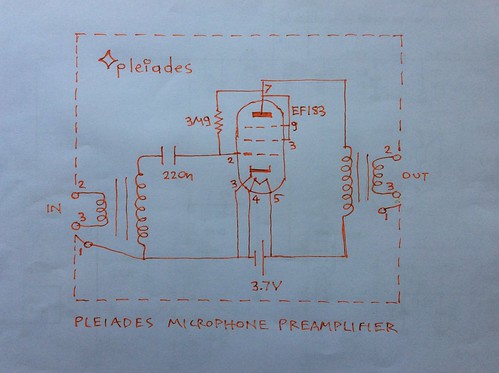At your own risk. All safety precautions should be exercised including fuse in series with battery and using low acoustic levels, limiters etc to protect the ears.
Even earlier that 1930 where electron tubes were as popular as they are today the limit of amplification was reached or explained.
Many electron tube amplifiers would be connected one feeding the other until the thermal noise of electrons was clearly heard as hiss.
Much larger ions when they are attracted near the cathode grid space change have a different sound quality especially when the effect is prominent by an increased cathode temperature [Pearson].
Inside an electron vacuum tube we have a great lab to study electrons, ions and their effects.
The Pleiades V6 microphone booster electron tube amplifier is a low noise attempt to play with electrons or amplify the smallest signal without the need of high voltage and bulky power supply. You act at your own risk and all safety precautions should be exercised including a fuse in series with any battery.

Normally the Pleiades bias (anode to grid) resistor is 6MΩ. The coupling capacitor is usually 22nF. The Nuvistor 7586 can be used. The ECC82 also etc. Sound quality or anode current, input impedance can adjusted by the Pleiades bias resistor.
It is based on possibly 2 of the best low level amplifiers on our planet for microphones. The Neumann U47, VF14 amplifier and the RCA BA-2C booster amplifier. Note the cathode temperature of the VF14 electron tube is reduced by a lower heater voltage than specified by a datasheet of VF14.
References:
Neumann U47 schematic, can be downloaded from the BBC link below:
https://www.bbc.co.uk/rd/publications/rdreport_1954_23
RCA booster microphone BA-2C amplifier
http://www.coutant.org/ba2c/
No comments:
Post a Comment